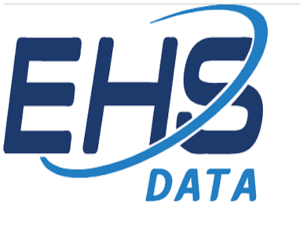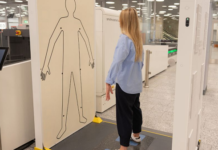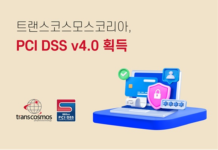
Did you know that many companies don’t have the necessary systems set up to ensure the safety of their EHS data? This is why it’s important to discuss some FL Data tips to secure this information.
Every company today is collecting and storing information about injuries, illnesses, environmental performance, risks, and sustainability. This information contains a lot of very sensitive data about the employees and the business itself. This is exactly the kind of information that cybercriminals are after.
Why do You Need to Protect Your EHS Data?
Apparently, only 58% of companies with 100 to 1000 employees are concerned about information security. And in this 58%, only 14% know how to mitigate vulnerabilities, cyber risks, and attacks. So, why is there a huge discrepancy?
There are several reasons why there’s a very small percentage of companies that can effectively lessen these risks. These reasons include budget, lack of personnel, and technology. Security threats evolve, and therefore, you need to protect your EHS data.
EHS information contains a lot of sensitive personal and company information. That makes it the best target for hackers. But having this information stolen isn’t your only problem. You need to consider the risks of losing critical information if your computer crashes, or if you get locked out of your system through ransomware, or if you lose customers or suppliers because of insufficient information security practices.
FL Data: Tips to Keep Your EHS Data Safe
To help you ensure that your EHS data is safe, here are some FL Data tips that you can follow:
- Move to the cloud. Instead of using Excel, consider moving your EHS data to the cloud. Cloud services are safer and reliable, not to mention that they are affordable, too. Using cloud-based EHS systems, you can access security features, such as network security, disaster recovery, encryption, and 24/7 support. And since you’re using the cloud to store your data, instead of a local device, you can still access the information even if your computer crashes.
- Don’t use spreadsheets anymore. Traditional organizations use spreadsheets for some or all their EHS data. But have you considered what would happen to this information? Anyone can delete or overwrite spreadsheets. Anyone can accidentally share this information with the wrong people. Besides, if you forget or lose the password to the spreadsheet, you won’t be able to retrieve it anymore. Microsoft cannot retrieve it for you, so there’s no way for you to retrieve it, too. It’s gone forever!
- Restrict access. If few people can access sensitive information, then the likelihood of the information getting into the wrong hands is lower. So, if you limit the access to data to just what each job function requires, then you can prevent the possibility of a security incident. You should be able to easily set permissions so that only specific employees can access sensitive information.
- Backup your data. Since we mentioned crashes earlier, have you ever experienced that sinking feeling when you lose your vacation photos? How about losing an important power file for your scheduled presentation when your computer bites the dust? You can avoid this problem if you backup your data.
Doing this will help you protect your information in case it gets stolen, lost, or destroyed. It’s always a good idea to always create backup copies of your EHS data. It’s even better if you’re using a system like FL Data to back up your information for you.
5. Always use strong passwords. Passwords serve as your first line of defense between your EHS information and cybercriminals who want it. If you have a strong password, then your information is more secured. A strong password is one that is difficult for hackers to guess but is easier for you to remember. You can capitalize one or more letters and add special characters.
6. Install updates automatically. Software updates can help ensure the safety of your EHS data because they often include fixes and critical patches for known security vulnerabilities. If you don’t update your software, then you could be putting your EHS data at risk. It’s quite easy to click “ignore” on those pop-ups or forget to install the updates. Make sure to allow your software to update automatically during maintenance so you wouldn’t have to worry about it.
7. Use SSO (single sign-on). We understand how much of a pain it is to keep track of dozens of passwords at work. Because of this, you might want to use SSO or single sign-on. This involves using a single user ID and password so you can access several systems. For example, if you use your Google account to log in to Netflix, this is called single sign-on.
Modern EHS systems support SSO, so you don’t need to remember an additional user ID and password.
8. Don’t store your passwords near your computer. Here’s a very common issue in offices: people store their passwords on a sticky note on their workstation, or write them in a piece of paper, and hide them under their keyboards. Unfortunately, doing this is like leaving your keys inside your car. Anyone can pass by your workstation and see your password. This serves as an invitation so people can use your password and access your EHS data.
9. Lock your mobile devices (smartphones, tablets, etc.) Today, EHS professionals use their smartphones and tablets to access sensitive business information (excluding their personal e-mails, banking information, medical records). Did you know that more than 25% of smartphone users do not have a screen lock or other security features to protect their smartphones?
If you’re among those who haven’t set up a password, pattern, PIN, or face recognition yet, then now is your time to do so.
10. Make sure to update your mobile devices. 40% of smartphone users only update their phones when it’s convenient for them. Meanwhile, 10% never update their mobile apps at all. Updates aren’t only important for your PC. If you update your mobile operating system and apps, then you can ensure that your data is secured. Therefore, be sure to allow automatic updates on your mobile devices.


















